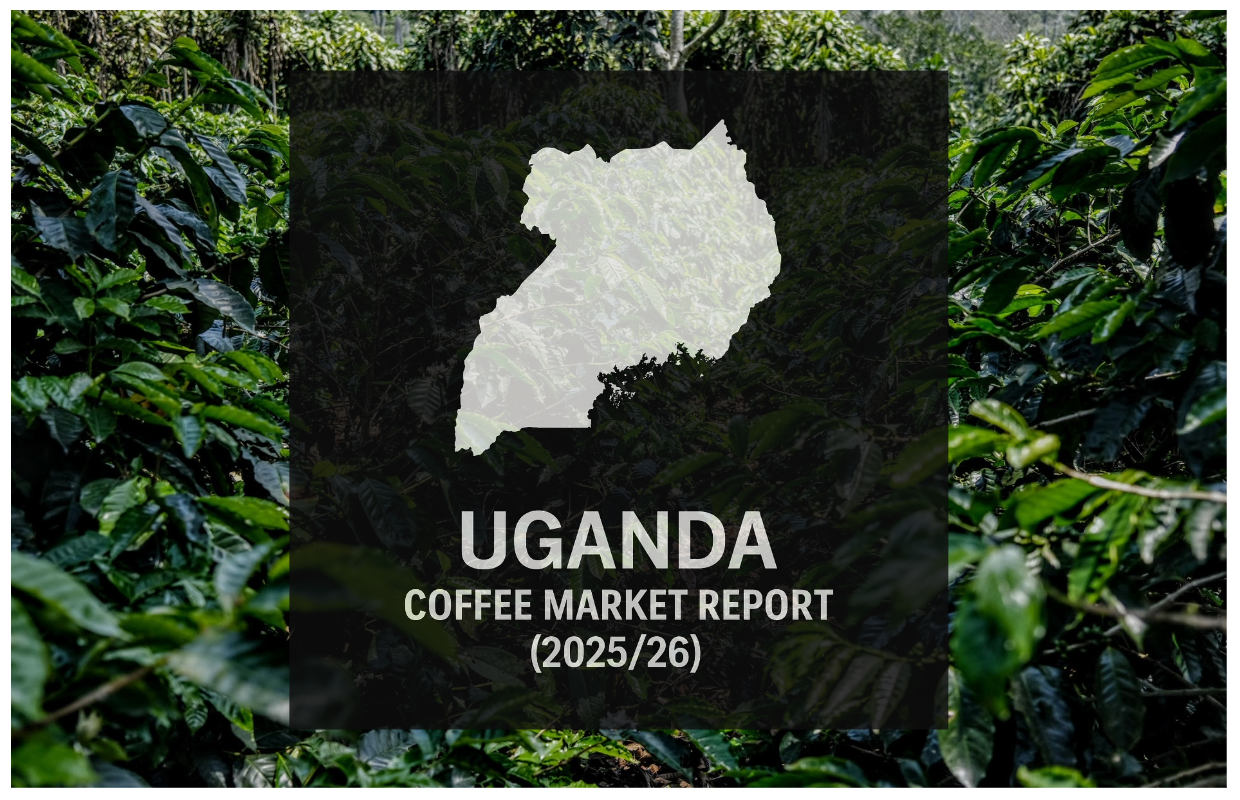Uganda’s coffee production is expected to expand in the 2025/26 marketing year, with a forecast of the equivalent of 6.88 million 60-kilogram bags, up 2.6% from the previous year, according to the latest USDA estimates.
The increase is attributed to favorable weather, the maturing of improved seedlings, and a national program offering low-interest loans to farmers.
Exports are projected to reach 6.53 million bags, an increase of 2.8% from the previous season. The European Union continues to dominate as Uganda’s leading coffee market, followed by the United States, Morocco, India and China.
While domestic consumption is expected to rise modestly to 330,000 bags, the export market remains the key driver of sector growth, especially amid this period of relatively high commodity prices.
At the same time, Uganda is undergoing significant structural changes, including the dissolution of the Uganda Coffee Development Authority (UCDA), raising questions about how future support services for farmers and exporters will be delivered.
These and other predictions are outlined in the latest USDA Foreign Agriculture Service annual report on the Uganda coffee sector. Notably, the report did not include projections for how the new European deforestation-free law (EUDR) might affect Uganda in the coming year.
[Note: This is part of a series of DCN stories that will explore USDA FAS annual coffee reports. The information agency typically delivers more than a dozen country-level reports on the coffee sector, each coming from different authors and field offices, with predictions for the upcoming market year.]
📉 Export Outlook
-
Total exports are forecast at 6.53 million 60-kilo bags, up from a revised estimate of 6.35 million the previous year. The increase reflects not just higher production, but also stronger demand from key global markets and relatively low stock levels encouraging fast turnover.
-
Virtually all exports are in the form of raw green beans, with limited domestic processing. Uganda is targeting value-addition in future years through industrial development, but for now, the bulk of exports are unprocessed.
-
Top export destinations in 2024 (by volume in metric tons):
-
European Union: 193,169 metric tones (MT). Despite a slight year-over-year decline, the EU remains by far Uganda’s largest market.
-
United States: 19,142 MT. U.S. imports rebounded after previous years’ declines.
-
Morocco: 16,502 MT, with steady growth as a North African hub.
-
India and China: both continue to grow as key Asian markets for Ugandan coffee, aided by evolving trade relationships.
-
-
The EU accounted for 72% of Uganda’s total coffee exports in 2024, underscoring Europe’s role as the sector’s primary market anchor.
-
Direct trade contracts are increasingly common, particularly between medium and large farms and buyers in Europe and North America. These arrangements can improve traceability and may enhance quality premiums, according to the report.
🌱 Production and Growing Conditions
-
Total production is forecast at 6.88 million bags, up from 6.7 million in 2024/25. The increase is driven by improved farm management and widespread use of high-yielding coffee seedlings distributed in recent years.
-
Robusta production is expected to reach 5.82 million bags, accounting for approximately 85% of total output.
-
Arabica production is forecast at 1.06 million bags, or about 15% of the total. Most arabica is grown in high-altitude regions and is commonly sold as specialty-grade coffee.
-
Production growth is supported by the Parish Development Model, a government-backed financing initiative offering low-interest loans (6% annually) with a grace period. These funds help farmers invest in critical inputs like fertilizers and irrigation tools, according to the report.
-
Uganda’s coffee-growing zones span four key regions, each with distinct ecological profiles:
-
Central Region (Mukono, Luwero): Primarily robusta farms on smallholder plots.
-
Eastern Region (Mount Elgon, Kapchorwa, Mbale): High-quality arabica, often cultivated under shade.
-
Western Region (Kasese, Rwenzori, Bushenyi): Mix of arabica and robusta, with rising specialty arabica output.
-
Northern Region (Zombo): An emerging arabica zone gaining recognition for its high-altitude terrain and newly established farms.
-
☕ Domestic Consumption
-
Domestic consumption is projected to reach 330,000 bags, a modest increase from 325,000 the prior year. The rise reflects growing interest in coffee among urban populations.
-
Coffee consumption is growing fastest in Kampala and other major cities, where more cafés, roasteries and specialty coffee outlets are opening.
-
Despite the increase, Uganda’s per capita coffee consumption remains low, as producers continue to focus on exports due to higher price incentives abroad.
-
Soluble and roasted coffee products are still relatively limited, though increasing industrial investments could improve domestic availability in the future.
🏷️ Prices and Stocks
-
Domestic coffee prices have surged, rising from $2.63 per kilogram in 2023/24 to $4.64 in 2024/25, a 7.4% year-over-year increase.
-
The price trend reflects global dynamics, including drought-reduced output in Brazil and Vietnam, which has tightened global supply and pushed prices higher.
-
Ending stocks for 2024/25 are estimated at 269,000 bags, up slightly from the previous year but still considered low. The limited carryover is a result of strong export demand and favorable pricing.
-
Stocks are primarily held by exporters and traders, with smallholder farmers typically selling most of their crop immediately due to cash needs.
🏛️ Policy and Value Addition
-
In November 2024, Uganda passed the National Coffee Bill, dissolving the Uganda Coffee Development Authority (UCDA). Its responsibilities have been absorbed by the Ministry of Agriculture.
-
Industry stakeholders have expressed concern that the dissolution could weaken specialized support services, including technical assistance, quality control and export promotion.
-
A major value-addition initiative is underway, as Inspire Africa Coffee is building Uganda’s first coffee-specific industrial park in Ntungamo District. The processing and manufacturing facility is expected to open this month.
For more details and full data tables, see the USDA Coffee Annual Report for Uganda (May 2025).
Comments? Questions? News to share? Contact DCN’s editors here. For all the latest coffee industry news, subscribe to the DCN newsletter.







Comment